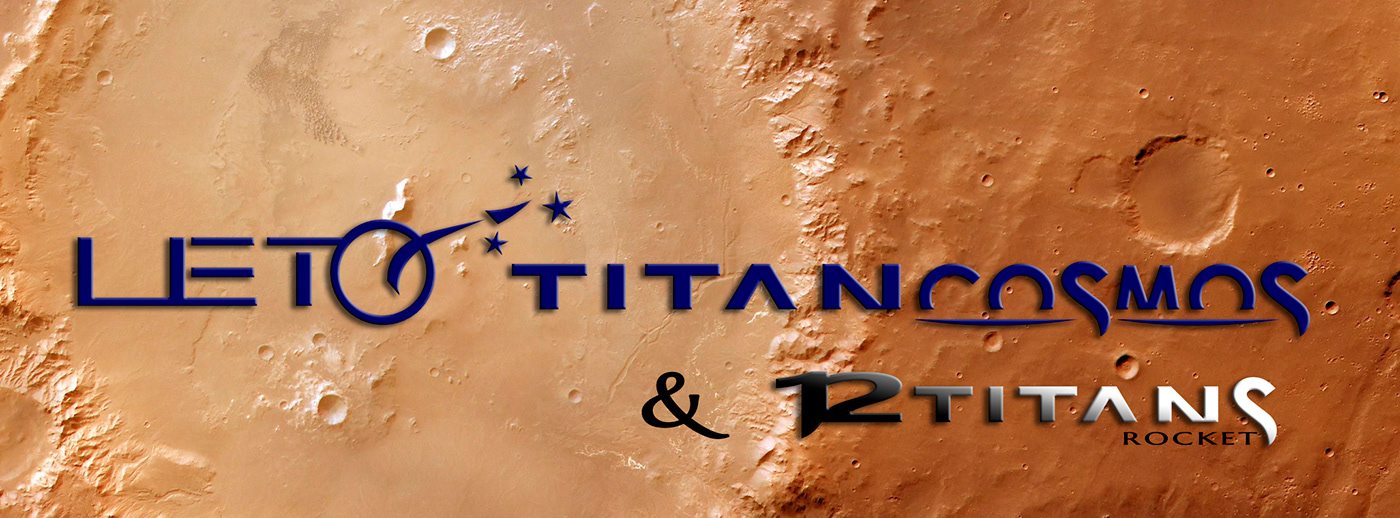
LETO TITAN COSMOS, SPACE FRONTIERS EXPLORER
LONG VERSION
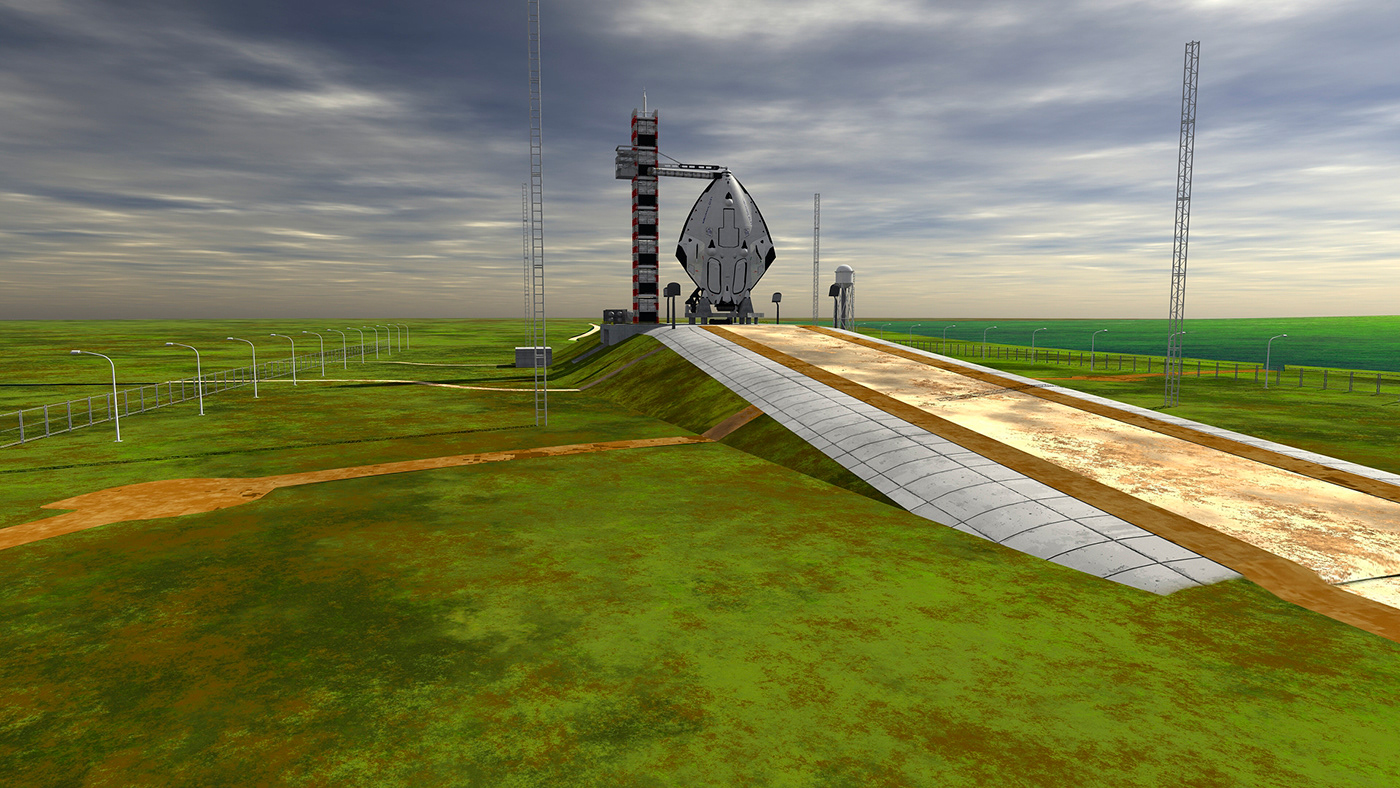









Space exploration is not simply a sign of humanity’s hubris in continually trying to push the boundaries a little further. Space exploration has provided answers to some fundamental questions about the origins of the Earth and humanity’s place in the universe.
Exploring other planets to prepare for the future of our own and the progress for humankind. Space exploration missions have brought tangible improvements for the Earth and its inhabitants. Countless innovations in sectors ranging from metals and alloys to biology and medicine Materials developed and tested in space, under unique conditions that are difficult to replicate on Earth, can give rise to stronger, lighter, higher-performance products.
The aim of space exploration is also to discover whether other planets are potentially habitable or find new material sources on closest celestial bodies, like the Moon or closest asteroids to Earth.That also, could offer us the possibility to obtain “rare/unusual” materials that we can’t find on Earth or exits in a very few amounts. For example, Helium-3, a feasible fuel for future fusion reactors that we could obtain mining the Moon on big quantity.
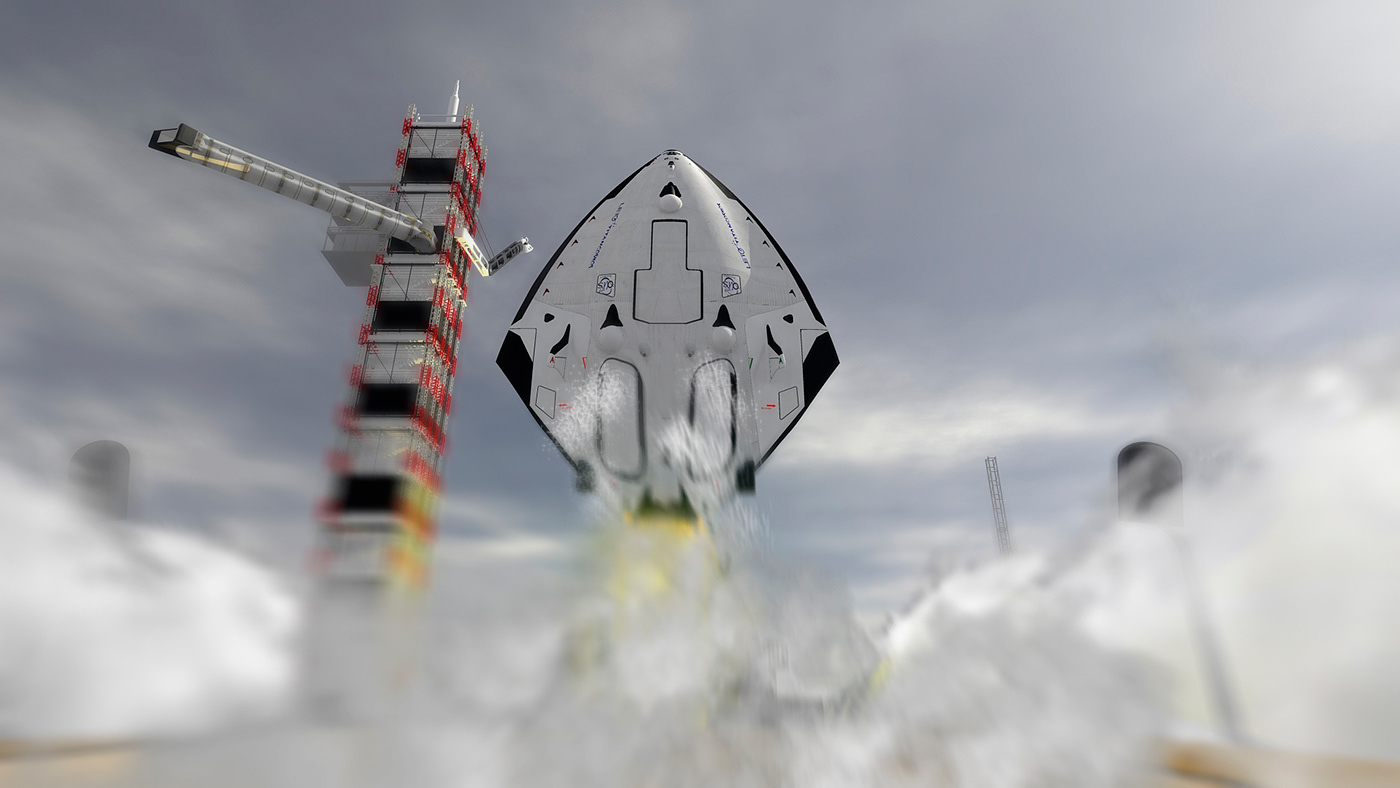




The challenges of space exploration are great and we can learn so much from mastering them. The LETO TITAN COSMOS concept project born as a “future option” to explore and take advance of new sources, to obtain valuable materials out of Earth and interesting for our future society and develop.
The LETO TITAN COSMOS concept, gets its name from one of the twelve Titans of the Greek mythology, the goddess Leto, that was Apollo and Artemis’ mother; also, is an indirect reference about of Apollo & Artemis’ NASA space programs, because share future and past space concepts/ideas from those space programs.




The main spacecraft, The LETO TITAN COSMOS, would be a new concept of space shuttle, much more efficient in terms of carry up payloads to put in orbit, to transport to the ISS, to the Moon and beyond. Thanks to new materials, new technologies and new aerospace techniques of construction of this 21th century, the possibility to built this new generation of spaceships, in this case, a mix between a shuttle and a spacecraft explorer could be possible. The crew could be composed up to 5 astronauts.
The LETO TITAN COSMOS could be equipped for a variety of new generation of space engines, a linear aerospike engine, an aerospike annular engines (redirected thrust) and a VASIMR engine. The main engine (linear aerospike) could burn at the same time that the 12 TITANS’s rocket engines from the launch pad.







The 12 TITANS, could be a reusable rocket, equipped by two powerest & oversize rocket engines based on SpaceX’s raptor rocket engines. Propelled by a mix between of cryogenic liquid methane(CH4) and liquid oxygen (LOX),could produce a thrust about of 10,600 kN (2,374,400 lbf total at sea-level) with its two engines in a cycle of Full-flow staged combustion.
Built on ultra-lightweight and strong materials, like titanium, carbon fiber or graphene in order to resist high temperatures and a hard conditions or high structural stress.The rocket could return to the base on the ground in an unmanned mode (like a big drone –X·37b-), and landing in a runway with a glide flight, thanks to be equipped with a satellite guidance system and its avionic system.
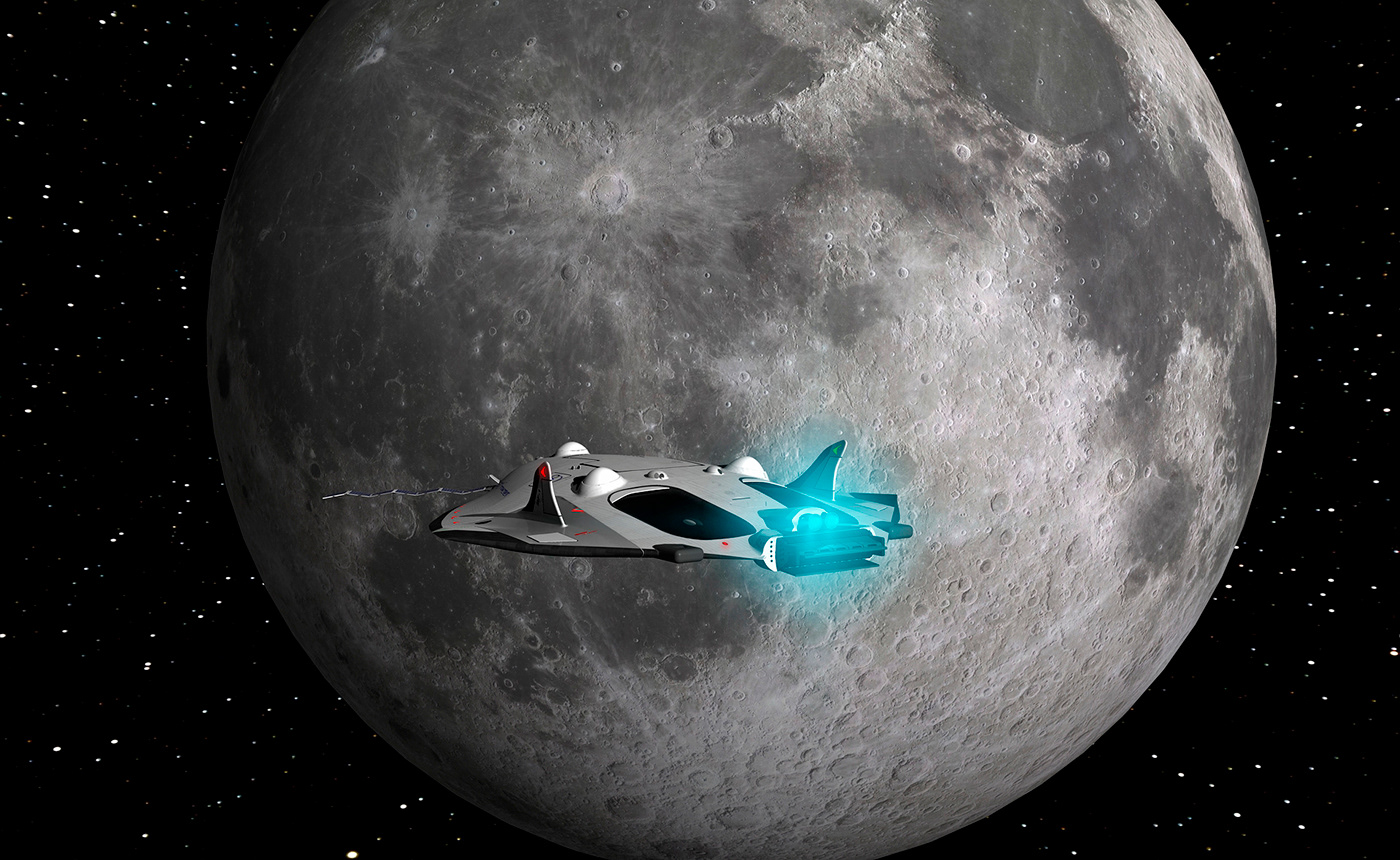




The involvement of private industry in the space sector is nothing new. World over, more and more work of space agencies is being done in collaboration with private companies. There are literally hundreds of private entities building commercial satellites for their clients and future space concepts projects. The LETO TITAN COSMOS, could be a space project affordable for private industry.
This space concept, could travel to Mars joined to a “mothership” capable to travel in less than two months (39 days), according the concept of theAd Astra's president and chief executive, Franklin Chang Diaz, who is a former Nasa astronaut and works developing the future VASIMR engine. Mr Chang Diaz tells the BBC. "For a spacecraft that would weigh 400-600 metric tonnes, with a power level of 200 MW (megawatts), you can get to Mars in 39 days."
Also, thanks to a rotational system that the “mothership” could have, and where the LETO TITAN COSMOS could be docked, the rotational movement could produce a micro gravity (0,8G) during the journey to Mars.
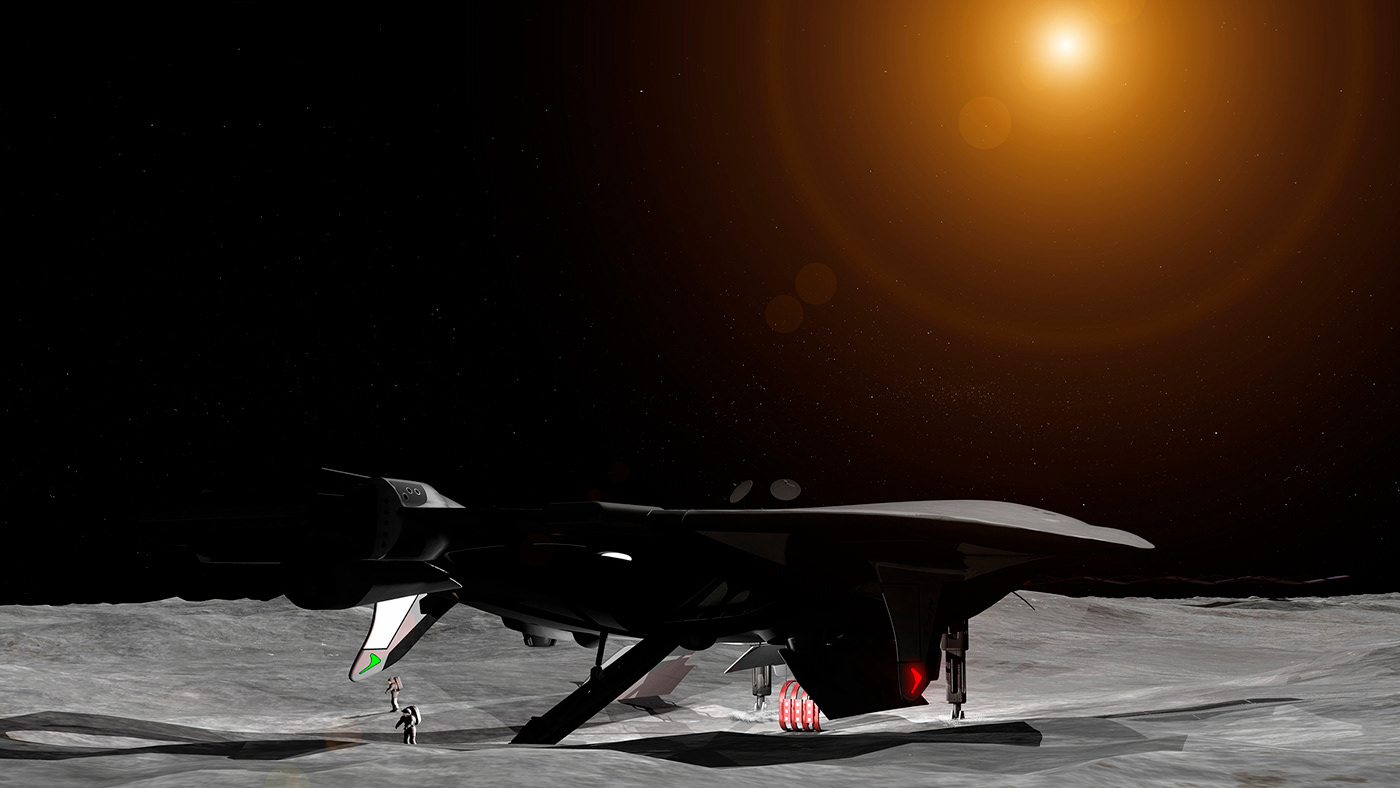





Mining the Moon, could be a possibility for the LETO TITAN COSMOS and could bring back to Earth a maximum of 17,000 kg of payload, in its cargo bay of 122.12m3. Also, could put in orbit payloads with a maximum of 30,000 kg of weight (from Earth).
Inside the cargo bay, the LETO TITAN COSMOS could have a lift/elevatorfor the astronauts in order to get access to the Moon surface or in other surface missions, and also to return to the spaceship, after “surface space walks”. The distance to run between the spaceship and the surface by the elevator would be approximately 5,8 m.
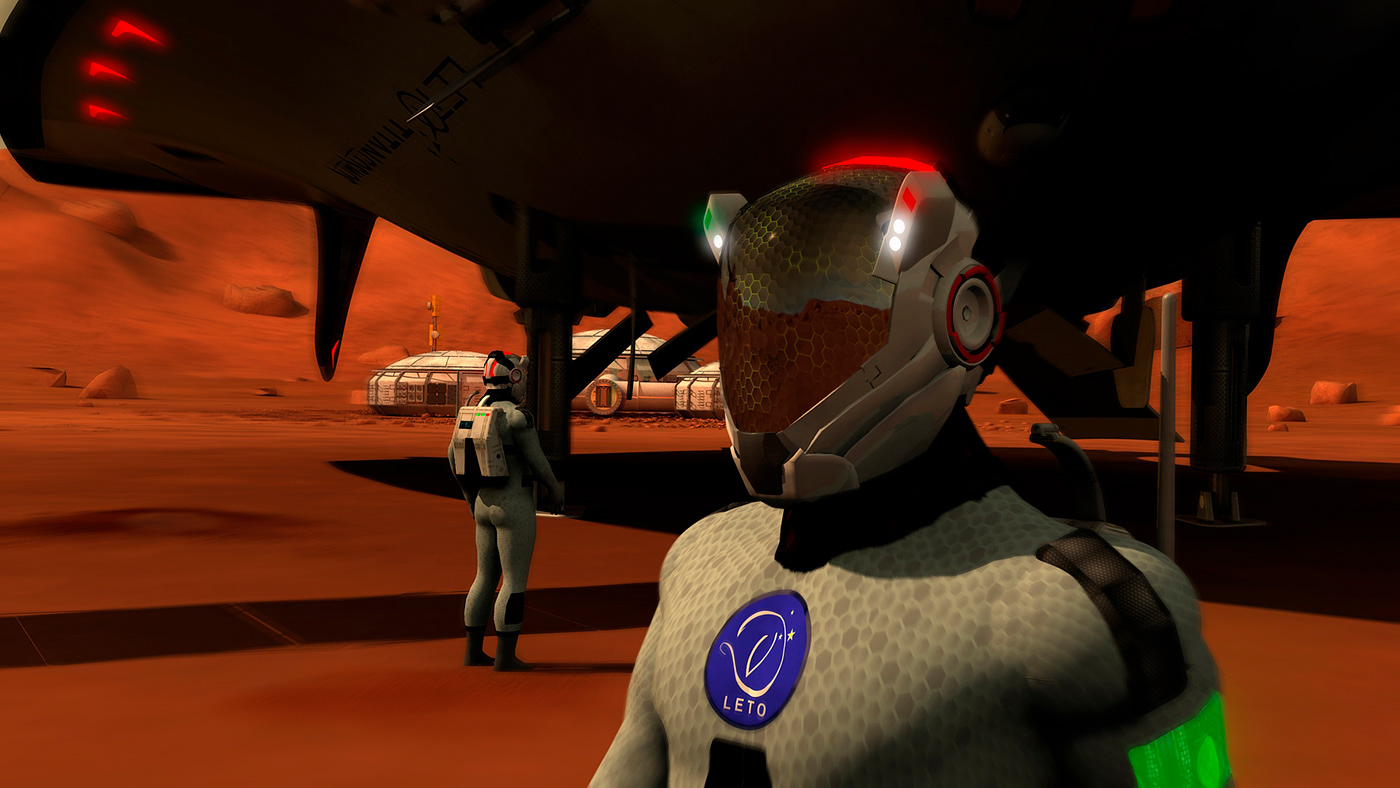






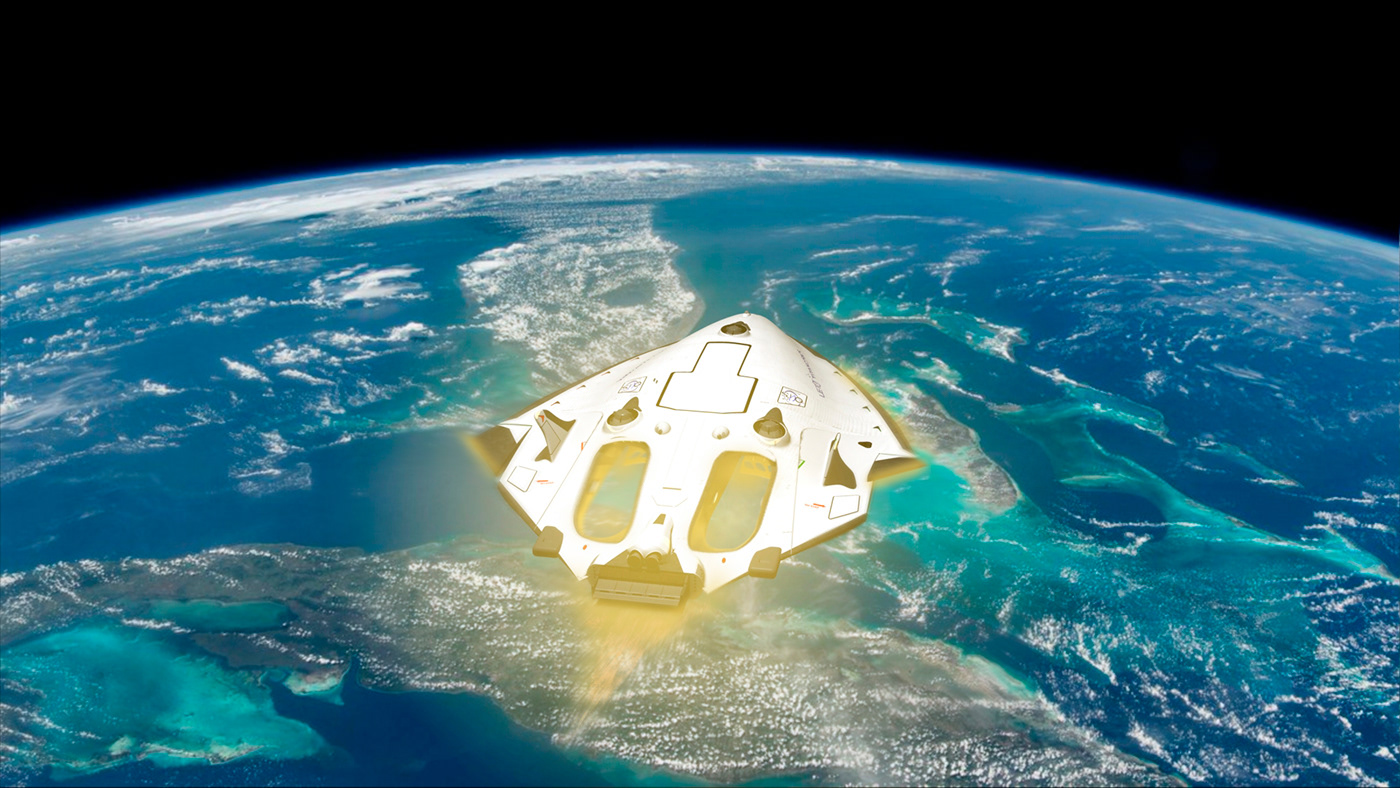























Also, due to its aerodynamic shapes this spaceship concept could have an amazing skill, the possibility to fly face down and land on a ground base control (Earth/Mars) as a SpaceX’s rocket, in a vertical maneuver. After test the spaceship model with computational fluids dynamic software (CFD), this could fly over 6,000 meters of altitude and with a specific atmospheric conditions (Earth), face down, controlling the descent with its 3 aerospike annular engines, located on the top of the fuselage until get landing. So, it could have to ways two land after a space mission, in a runway (most easy & safe way) or in a vertical maneuver.
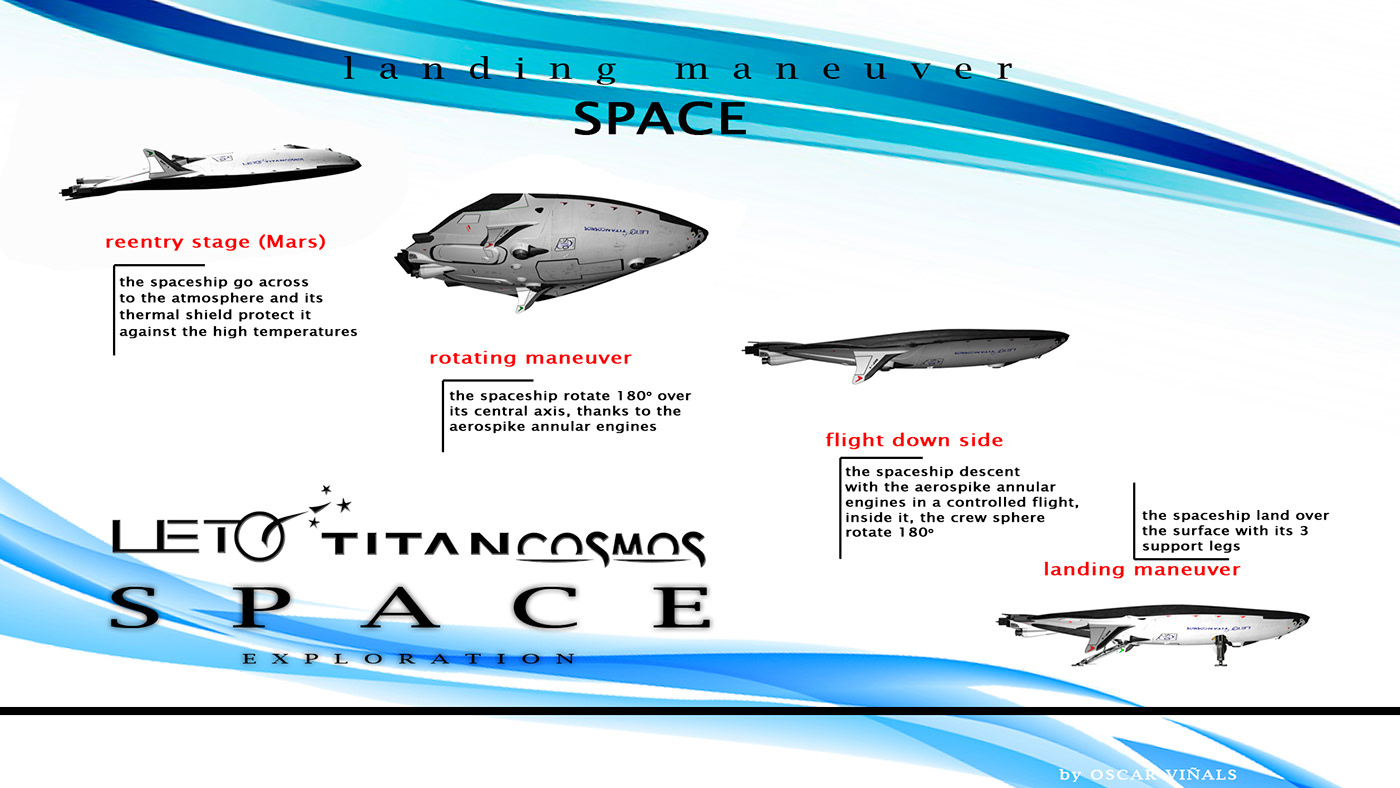
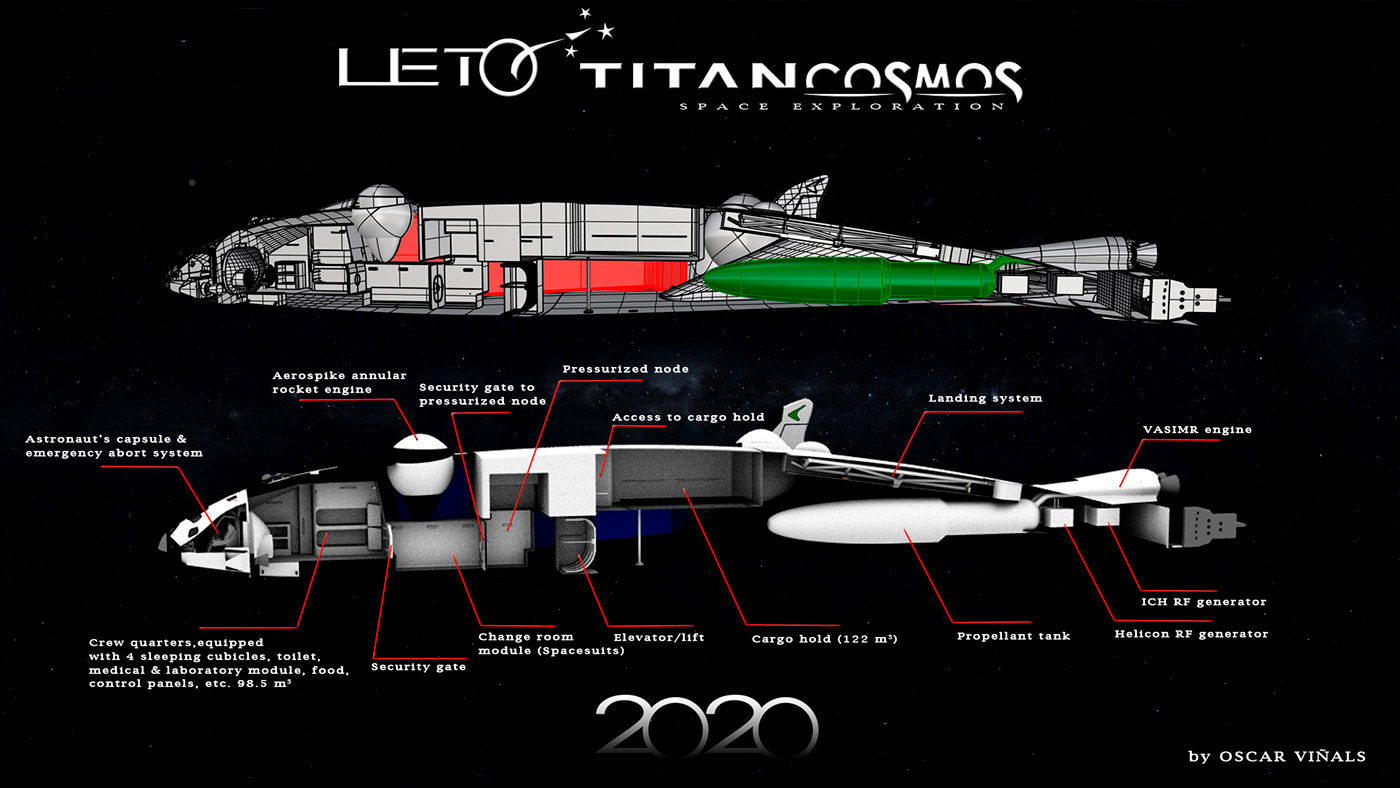
The linear aerospike engine,
Was originally designed to power the long since cancelled X-33 Venture Star.The rocket engine that can hypothetically maintain a fairly uniform efficiency, regardless of atmosphere, when the aerospike engine fires, the expanding gases are directed down the sides of the spike, rather than at random. In an atmospheric environment, surface tension and air pressure act like the other side of the bell, and hold the flames close to the spike, much like the way that water can be held against the underside of a surface as it rolls down. As the aerospike engine climbs to higher and higher altitudes and experiences thinner air pressures, the plume forms a more familiar vertical column, like the one we’re used to seeing in our normal rocket engines. Even in a vacuum environment, the engine holds its efficient well: should the gasses push in random directions without air pressure to form them, they’ll still inevitably have to react with the sides of the spike, “squeezing” it upwards. Currently, this kind of rocket engines aren’t than efficient as a bell rocket engines at sea level, but in the LETO TC concept, located in the base of the nozzle ramps (heat exchanger), it have a central thrust cells that works only at sea level (liftoff stage) in order to increase the lateral expanding gases speed, increasing the pressure of the turbine exhaust recirculation zone, with the result of more thrust at sea level.
The aerospike annular engines (redirected thrust),
Could be used to landing & liftoff over the Moon, Mars or other space mission.The LETO TITAN COSMOS, could have 3 of those and could redirect its thrust –vectoring-, located on the top of its fuselage, because when the spaceship needs to land, turn over 180oitself (face down) and the top side becomes the bottom side. These engines works as the linear model/type, but the thrust cells are in a circular shape and could redirect its thrust, combining and tuning the actuation of its thrust cells.
The VASIMR engines,
How it works? VASIMR is a heats plasma — an electrically charged gas (inert propellant) — to extreme temperatures using radio waves, strong magnetic fields then funnel this plasma out the back of the engine, creating thrust.These generate thrust by accelerating ions - charged atoms or molecules - using electricity, the electricity needed could be generated in different ways, but for sending humans to Mars, we should wants to use a nuclear reactor (Fusion).





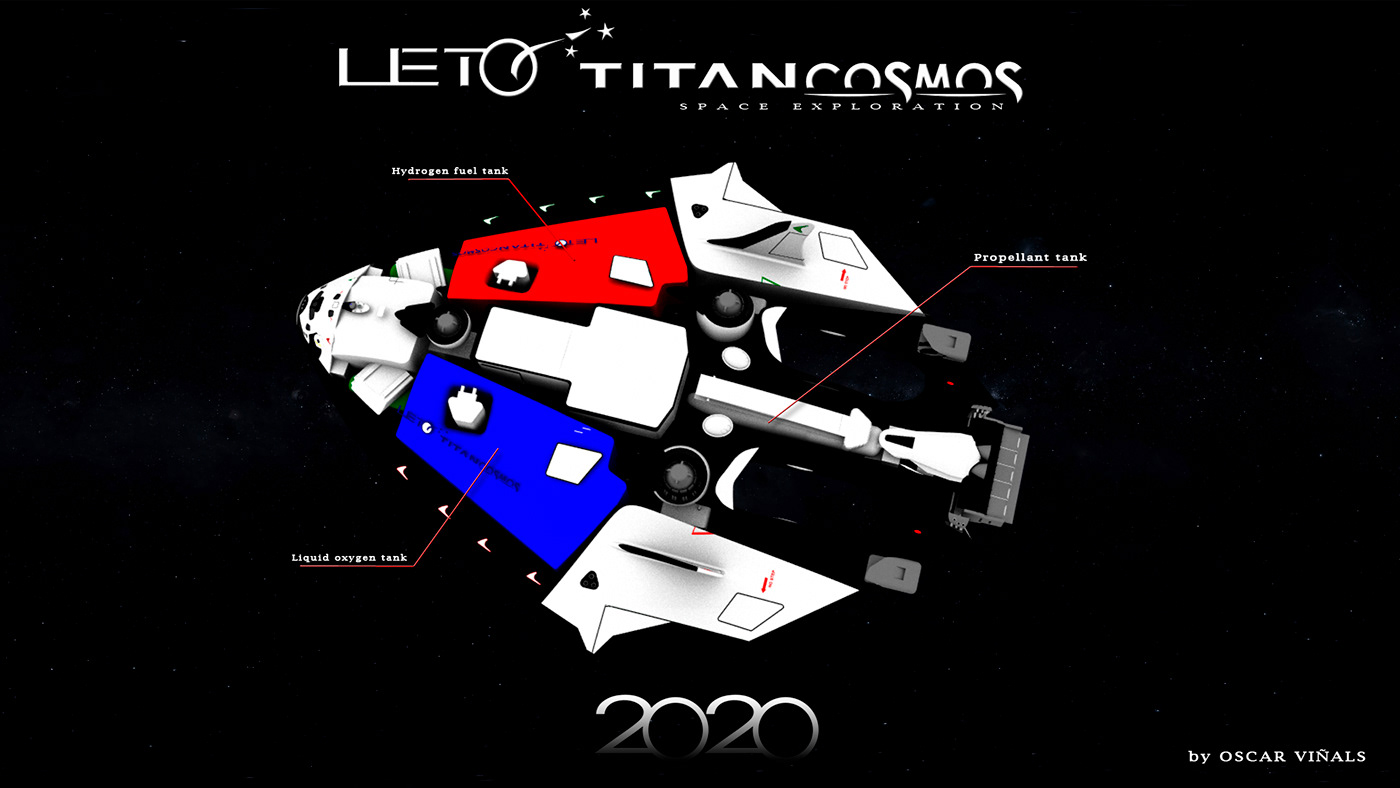





The LETO TITAN COSMOS, could have an emergency crew capsule escape system, based on an ejectable capsule riding atop the spaceship (front), that could fire two powerful thrusters to push the space crew to a safe distance, just in case of a failure launch from the launch pad or in a failure reentry. Then a parachutes would be fired and the “head” of the LETO TITAN COSMOS could land in a secure place, safe.
All the LETO TITAN COSMOS space explorer concept, would be reusable and when the main spaceship would explore or make missions, nothing would be remained left over the explored surfaces.
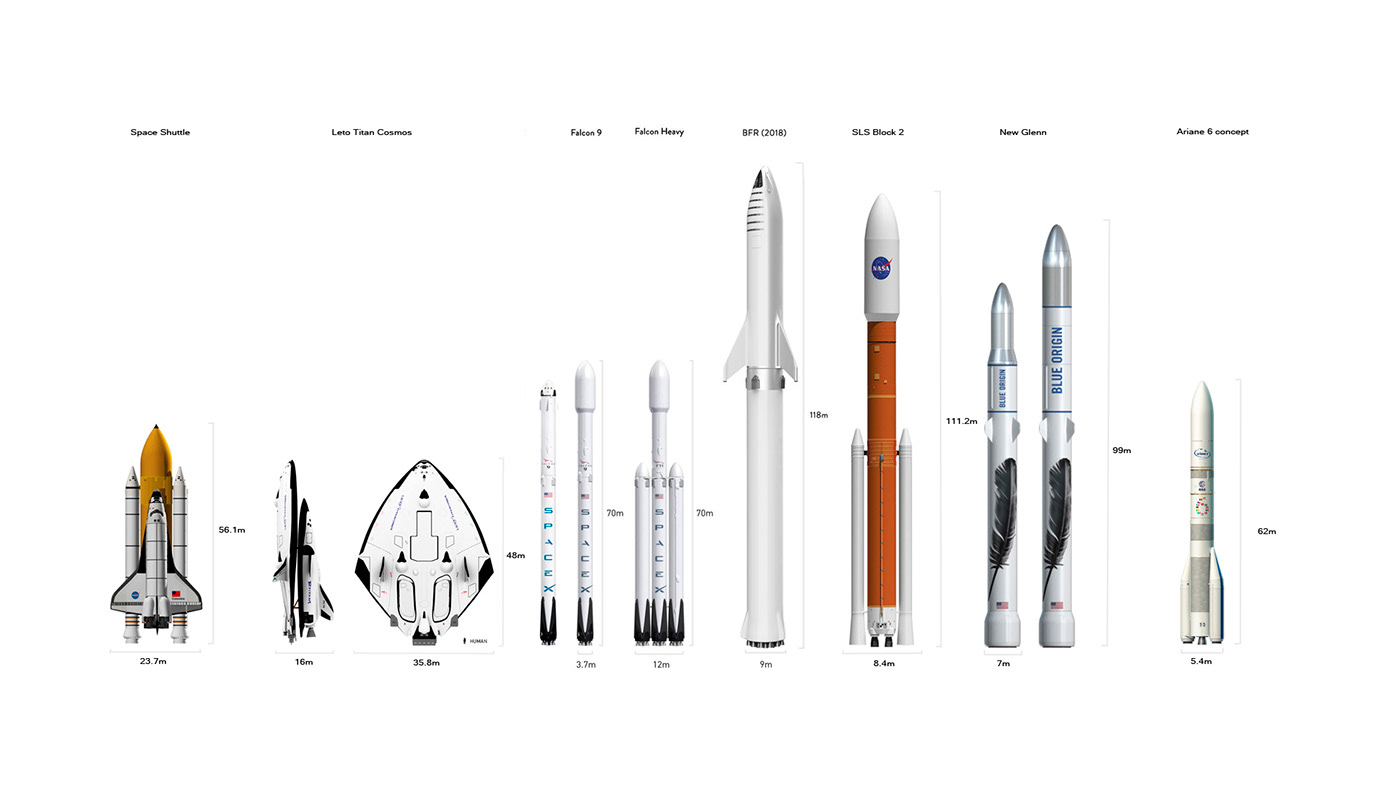
Who knows?...
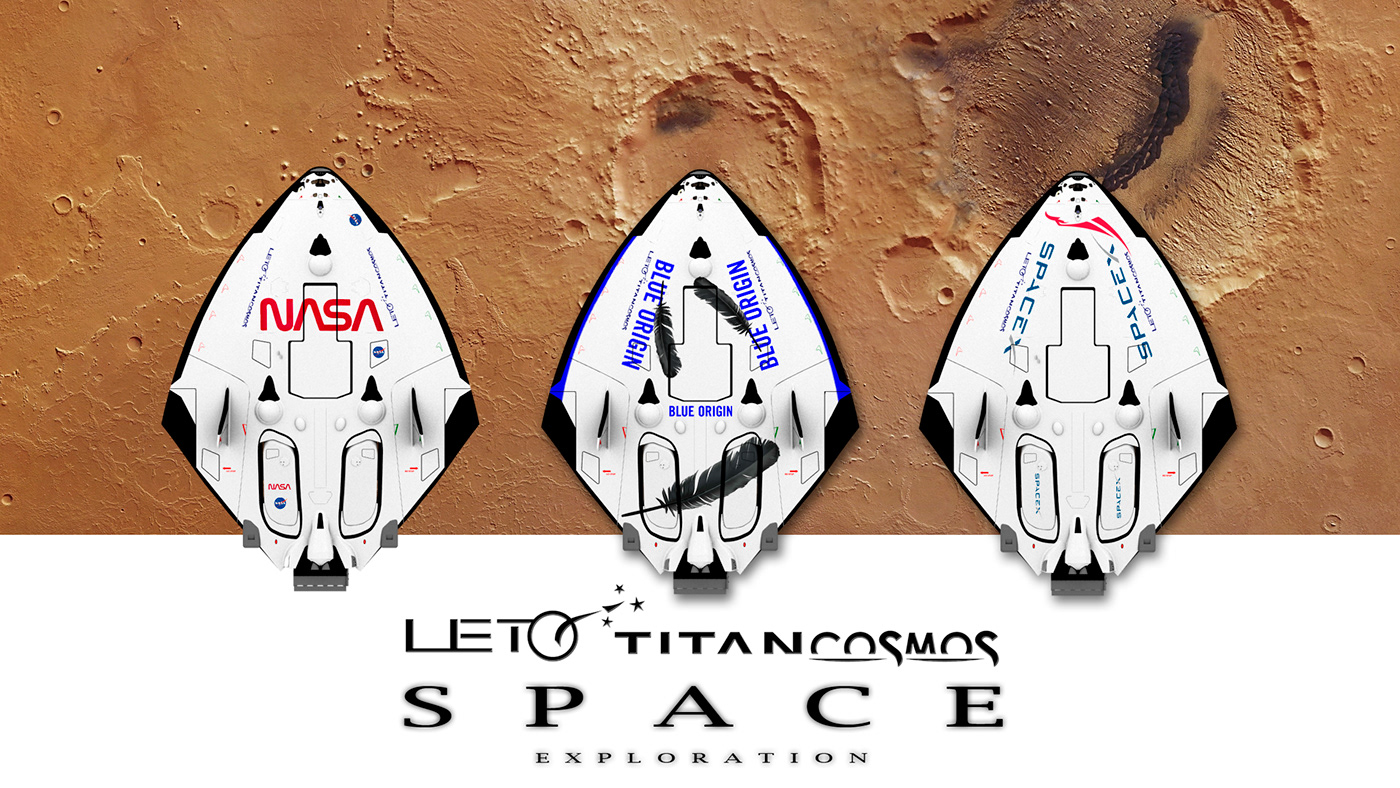
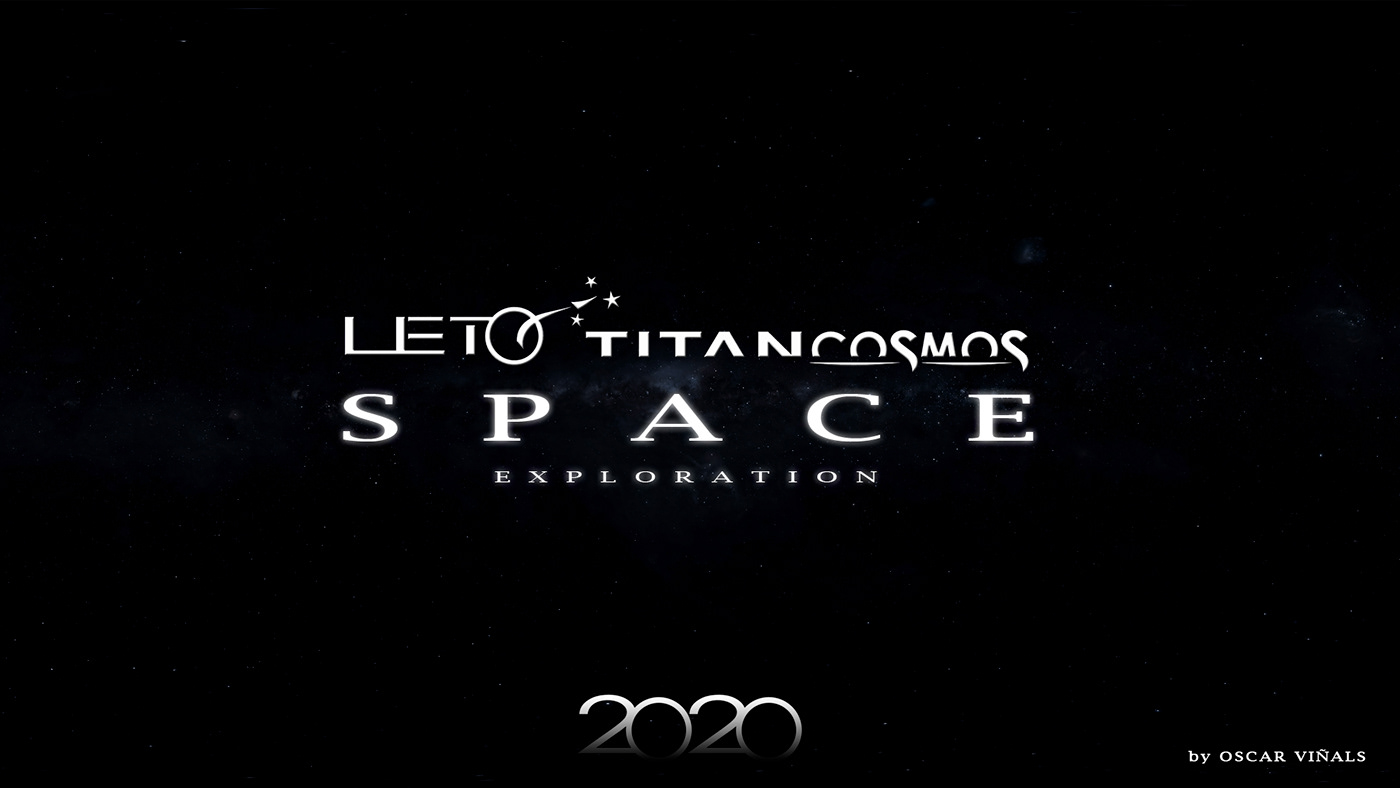
The challenges of space exploration are great and we can learn so much from mastering them. The LETO TITAN COSMOS space concept is committed to playing its part in this unique and historic adventure.
“Space exploration is a force of nature unto itself that no other force in society can rival.”
Neil deGrasse Tyson
The future is big... very BIG!
(Space recreations for Leviathan Space Industries inc. (Florida, USA) and Guayaquil Space Society (Global Spaceport Alliance)






